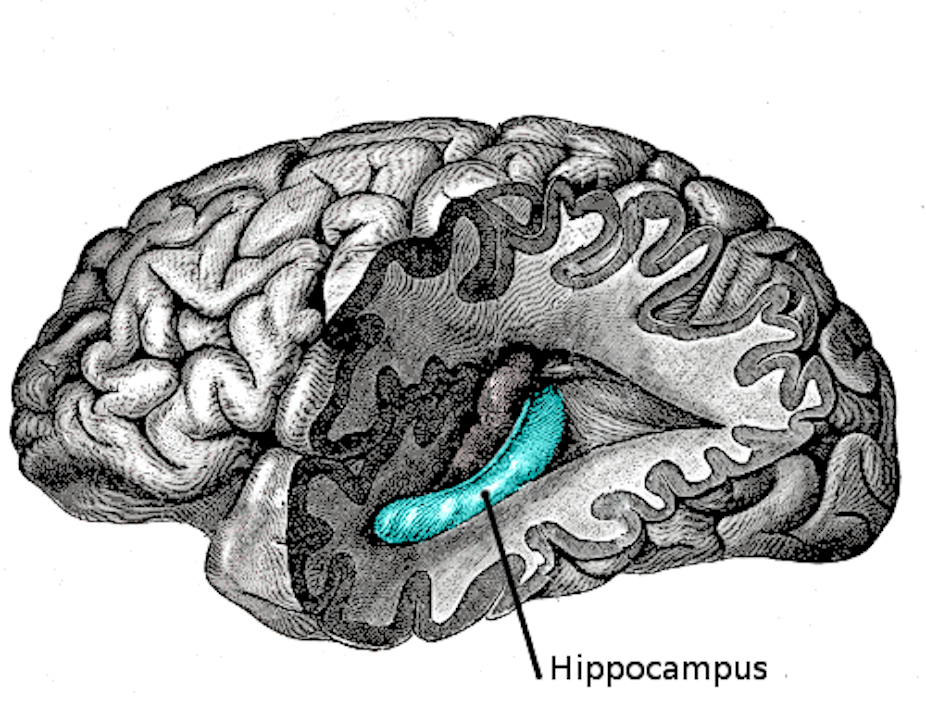This year’s Nobel Prize in medicine recognises work on “cells that constitute a positioning system in the brain.” Those cells are found in the hippocampus. It is just one tiny part of the brain, but this structure gets at least its fair share of research attention.
The hippocampus is located in the middle of the brain in a region known as the medial temporal lobe. Imagine travelling inward from your ear toward the centre of your head. It resembles a seahorse, with the name derived from the Greek words “hippo” for horse and “kampos” for sea.

Its appearance and cellular arrangement are similar in all mammals, ranging from humans to rodents. The hippocampus has been called the “neural Rosetta stone” since the discovery in the 1950s that removing it in patients suffering from epilepsy prevented new memory formation.
Damage to the hippocampus leads to trouble forming new memories of the time or location of an event. Impaired blood flow and the ensuing lack of oxygen, as occurs in a stroke, is one way the hippocampus can be damaged.
It is also one of the first regions of the brain to degenerate in Alzheimer’s disease. Patients cannot recognise their surroundings and lose the ability to navigate from one place to another.
Among the crucial cells are the so-called place cells. These cells – now famous due to this year’s Nobel prize – help determine spatial location and allow navigation from one place to another. They contain information about direction and distance.
Place cells allow an animal to construct a map of the environment and its location within it. The hippocampus thus allows an animal to make decisions on the basis of distance and direction towards desired goals, such as food, or away from undesirable objects, such as a predator.
Brain scans have shown that London taxi drivers have an enlarged hippocampus compared to non-taxi driver colleagues, thanks to the spatial abilities necessary to do their job.

A fundamental question resulting from research on hippocampal function is what synaptic and molecular mechanisms develop and maintain place fields in new surroundings. A place field is the region in which a cell fires the most and is also known as the cell’s “firing-field”.
New Nobel laureate John O’Keefe and his group recorded groups of individual hippocampal neurons in rodents as they navigated space, explored new environments and foraged for food in familiar environments.
A cognitive map is a mental representation which enables an individual to acquire, code, store, recall and decode information about the relative locations and attributes of phenomena in their everyday environment. Computational modelling of the hippocampus’ cognitive map has helped generate theoretical predictions which inform empirical investigations of hippocampal function. Is an animal’s location within its environment represented by a single cell firing or at the level of networks of such cells?

The discovery of grid cells – a neuron that allows understanding of their position in space – came from research by new Nobel laureates May-Britt and Edvard Moser. Their group demonstrated that grid cells provide clues to spatial mapping.
The group observed that grid cells are organised as functionally independent modules. Now they’re asking how grid cells’ modules contribute to the formation of high-capacity memory (even when connections are sparse) in the hippocampus.
Ultimately this research will enable a greater understanding of how memories are formed and what goes wrong in cognitive diseases and dysfunction such as Alzheimer’s.

